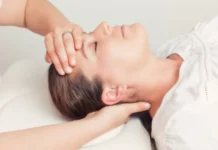Every time we exercise we expect that we stretch our muscles enough to cause a change. However, that change does not come without a price. The muscular rigidity, the pain, the microtrauma, the inflammations, the disorders of the joints, all begin to make a dent in our bodies. Best Massage Therapist in Minneapolis can be the solution to the physical and mental stress we endure for our healthy lifestyles.
* Reduction of muscle tension.
* Reduced muscle tone.
* Greater range of motion
* Improves the function of soft tissues.
* Decreased muscle stiffness and fatigue after exercise.
* Improves the performance of the exercise.
* Decreased late-onset muscle pain
* Reduction of swelling/oedema.
The benefits have seen above only highlight the surface as the research attempts to demonstrate the validity of the claims that the massage industry has made over the years. The benefits that I hope will remain with you are related to helping you to function better and prevent future injuries. The main concern of sports therapists and structural body workers is to help the body realign so that the musculature can function better as a team to support our bodies against gravity. As the body moves out of alignment, the joints tighten in a different way than they were intended and the muscles are recruited for movements for which they were not designed. Often, we think that stretching or foaming will help us achieve the muscle balance we need, but only if you know which muscle (s) or fascial laminae are the exact cause.
One of the best examples I can think of is related to shoulder imbalances. Many publications in the forums will talk about how someone cannot enter the front rack position, or maybe they have shoulder pain during the bench press. These can be complicated problems for which a general stretching or foaming program will not work. A qualified massage therapist can assess which muscles are tense because they are short (with concentric loading), and which muscles are tight because they are blocked for a long time (with eccentric loading).
An example of this would be in a person who has the sloucher position of working at a desk all day. His pectoralis minor and the lower head of his trapezius are tight. Which one do we want to extend and which one do we want to strengthen? Our massage therapist has the tools to read the posture and determine those types of patterns. Then they could give them personalized exercises, stretches and muscles to fit their exact need, not the populations in general.




































































